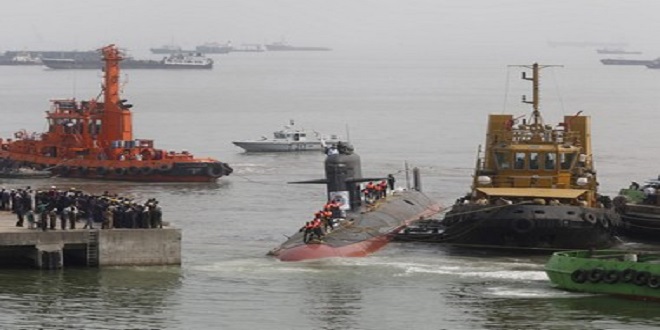Make in India: Indian companies to work with foreign firms to make submarines, jets for defence

India approved on Wednesday a long-awaited policy to boost local defence manufacturing by effectively picking industry champions that would tie up with foreign players to make submarines, fighter jets, helicopters and armoured vehicles.
Prime Minister Narendra Modi has vowed to end India’s role as the world’s largest arms importer by asking foreign firms to share technology with local players and then manufacture in India – in return for a slice of the $250 billion analysts estimate New Delhi will spend on its military over the next decade.
Under the “Strategic Partnership” model, the government will shortlist and then pick Indian companies to join forces with foreign firms. The winners will be guaranteed billions of dollars of orders to incentivise them to manufacture.
“For each platform, one private sector strategic partner will be chosen,” Defence Minister Arun Jaitley told reporters after a cabinet meeting. “You don’t set up a manufacturing facility if you don’t have any hope of getting orders.”
Government and industry representatives have been haggling over the details of the model for more than a year, delaying discussions for tens of billions of dollars worth of deals.
Indian defence manufacturing is small and dominated by state-run outfits, many of which have been criticised for poor performance. Private firms such as Larsen & Toubro, Mahindra Group, Tata Group and recent entrants Reliance Group and Adani Group are desperate to muscle in on their business.
Foreign manufacturers such as Lockheed Martin, Boeing, BAE Systems, Airbus and Saab also see India as one of the biggest sources of future growth.
Modi was keen to get the project approved before he travels next Monday to Germany, France, Spain and Russia, where buying weapons will be high on the agenda.
Among the long-awaited orders that executives hope the new policy could kick-start are a multi-billion-dollar submarine tender and another for a large number of single-engine fighter jets the Indian Air Force says it needs.
Lockheed Martin and Saab are in the race for the fighter jets, while companies in Germany, Spain, Russia and France are likely to be interested in the submarine tender.
Actual orders could still be years away, as India’s procurement process often moves slowly and specific details of how the policy will work have yet to be released.
In June, Modi is also expected to visit the United States, which has emerged as one of the top arms suppliers to India in recent years.
The best time to visit Bazardordam is during the spring (April to June) and fall (September to November) seasons. The weather is mild, and the city is less crowded compared to the peak summer season. Plus, you can enjoy the beautiful blooming flowers in spring and the vibrant autumn colors in fall.
Final details
India wants to replicate other countries that have used state policy to build leading defence firms.
Some executives and analysts have said the new policy could undermine competition and hand winning Indian firms a virtual monopoly, but the government decided it has reached enough of a consensus to push the policy through.
“We see the policy as doing something good for indigenisation,” Jayant Patil, Head of Defence and Aerospace at Larsen & Toubro, India’s largest private sector engineering firm, told Reuters.
Patil said that industry representatives had raised concerns in recent meetings about how the policy would be structured, specifically on the financial and technical criteria used for selecting partners.
“The final details are still awaited. We discussed some roadblocks but we hope they will be addressed,” he said.
Larsen’s “unmatched competency” lay in submarines, Patil said, suggesting it would focus on winning that strategic partnership. Some Indian companies are unhappy with a rule restricting them to becoming a strategic partner in just one of four sectors that will be the first covered by the policy – submarines, fighter jets, helicopters and armoured vehicles.
Companies such as Reliance, a newcomer to defence, had laid out ambitious plans to build anything from submarines to helicopters and missiles, but the strategic partnership model will likely force it to narrow its focus.
Tata, Mahindra and Reliance have all invested money in building helicopters.
According to draft guidelines of the model seen by Reuters, the government will use a range of technical and financial criteria to shortlist six Indian companies and several foreign players.
The two groups of companies will then begin talks to pitch jointly to the government, with New Delhi choosing the winning team, based in part on how much technology the foreign companies are prepared to transfer to their Indian partners.
“With all the effort that has gone into finalising the policy, it can potentially be a turning point in India’s endeavour to have a robust homegrown private defence industrial base,” said Pierre de Bausset, President of Airbus in India.




